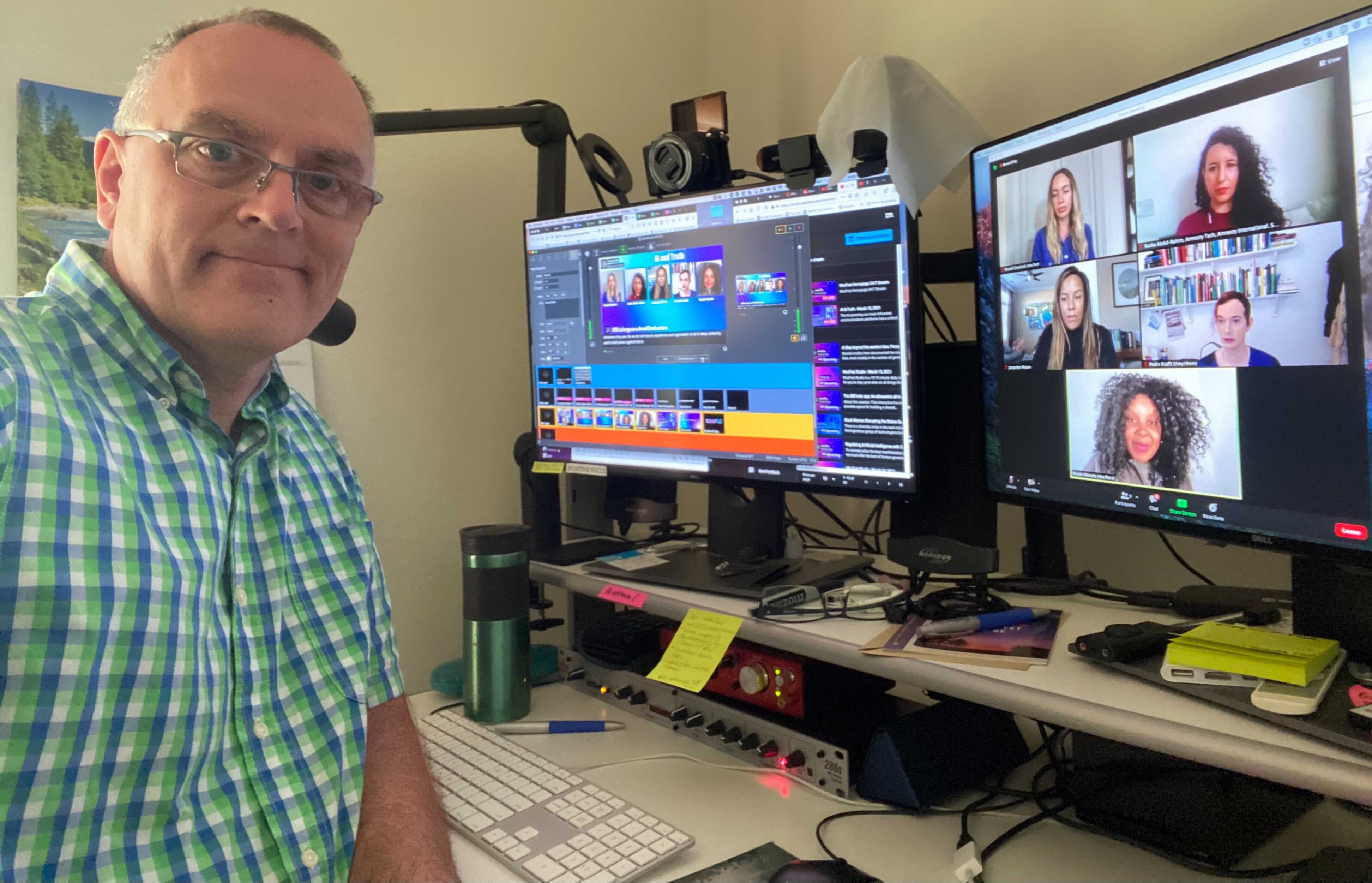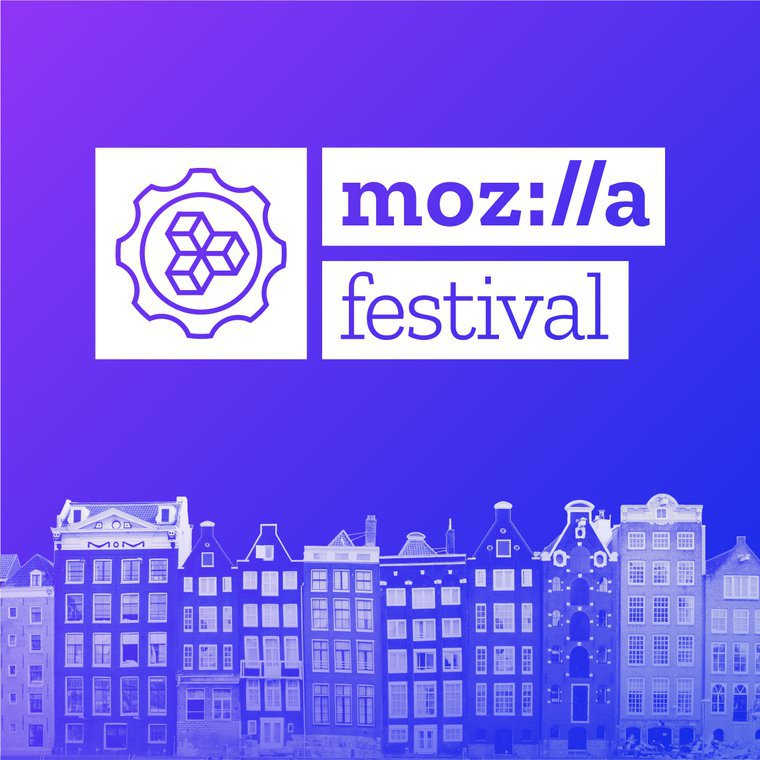This is part of a series of blog posts written by the MozFest staff that provides a glimpse behind the scenes of planning and executing the world's leading festival for the open internet health movement. This post is authored by Andy Kochendorfer and was originally published on LinkedIn.

Staff and budget had been significantly downsized. A physical event was impossible due to the global pandemic. How do we continue a long running global event under such conditions?
As a key member of the A/V team for Mozilla Festival 2021, these are the questions that plagued me last Fall. In response, I designed a virtual conference meeting and live-streaming workflow that, together with the event team’s hard work, allowed us to gather five times the attendees of previous physical festivals. Nearly 600 sessions over 12 days. Almost 300K stream views.
tl:DR - Be accessible, offer a flexible schedule, and be engaging.
The virtual meeting workflow leveraged Mozilla’s existing Zoom implementation for all meetings and extended meetings with individual live-streams and a 24/7 live-streaming channel upon the MozFest Plaza homepage. These technologies integrated into the website design, scheduling, and chat environments.
This workflow creation process resulted in a “learning-as-we-went” experience. If you are considering running your own virtual event, here are a few important points to consider that provided us with success:
- Be accessible. Use multiple live technologies that allow attendees to view and contribute from wherever they may be on any device. Zoom allows for presenters to gather easily in app and live-streaming is available on any browser. Both technologies provide for captioning to aid participation.
- Be flexible. Extend the number of event days and times to allow attendees to fit your conference into their schedule. You are no longer paying for an event space, so use the flexibility of time to your advantage.
- Be engaging. By offering a 24/7 live-streaming channel on the main plaza page, attendees do not need to hunt for live content and can view previous content. Additionally, Spatial Chat and open-source Mozilla Hubs were added as a method for people to engage directly with each other in a variety of environments, including a theater displaying the live-stream. Miro boards allowed for attendees to work together on projects.
- Offer a compelling video experience. Using Zoom as the live session panel basis, I was able to create custom live video compositions that match what attendees would see on television. Live video switching follows the actions, speakers, content, and can zoom in upon detailed slides/screen shares so viewers continue to watch.
- Live-stream socially. YouTube, Twitter, Twitch and others are free and are a great way to bring attendees in and broadcast your message, plus allow for additional interactivity.

Video software streaming tools like Wirecast (Mac/Win), VMix (Windows only), and others allow you to create custom, branded video compositions on the fly to enhance otherwise bland Zoom meetings. This gives you control over individual speaker video brightness/contrast/gamma/saturation/hue, cropping, drop shadows, and more. You can bring almost any source in with NDI (free NDI Tools) and even control PTZ cameras (e.g. Panasonic, Canon, etc.) right from the software. Custom text and graphics are easy to incorporate. This is part of what is called REMI (Remote Integration Model) production; video broadcast production from the home that has become common.
Hopefully the COVID pandemic will soon fade into history. People will start to return to physical event spaces. It is clear that virtual conferences are here to stay and no conference will be successful unless it is at least hybrid (containing virtual participation). Large virtual gatherings allow attendees to easily experience events that meet their location, budget, and devices. Happy streaming!
About the Author
Andy Kochendorfer serves as Lead, Streaming Communications for the Mozilla Corporation and as an integral support for the Mozilla Festival team. His expertise consists of virtual communications technology management, live interactive streaming SAAS platforms, Zoom and similar video meetings platforms, virtual events, broadcast television, and social media data collection with marketing automation.
MozFest is part art, tech and society convening, part maker festival, and the premiere gathering for activists in diverse global movements fighting for a more humane digital world. To learn more, visit www.mozillafestival.org.
Sign up for the MozFest newsletter here to stay up to date on the latest festival and internet health movement news.






